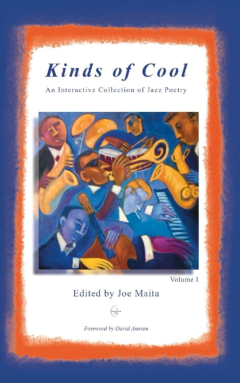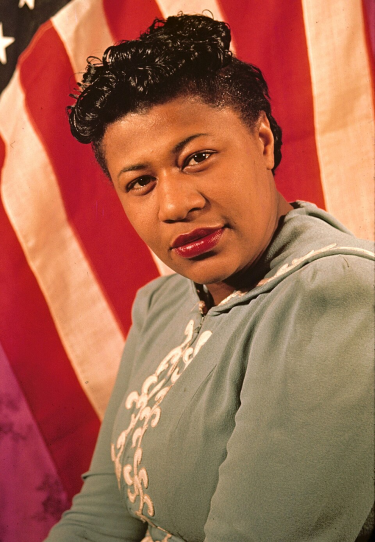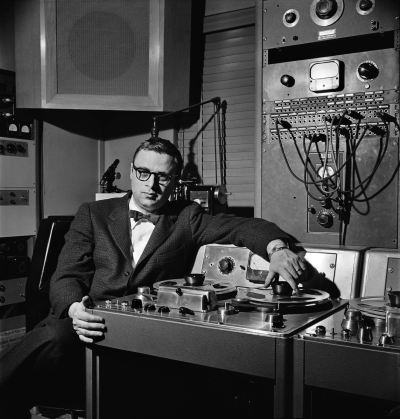Reminiscing in Tempo
*
Memories and Opinion
_____
“Reminiscing in Tempo” is part of a continuing effort to provide Jerry Jazz Musician readers with unique forms of “edu-tainment.” Every month (or as often as possible), Jerry Jazz Musician poses one question via e mail to a small number of prominent and diverse people. The question is designed to provoke a lively response that will potentially include the memories and/or opinion of those solicited.
Since it is not possible to know who will answer the question, the diversity of the participants will often depend on factors beyond the control of the publisher. The responses from the people who chose to participate in this edition are published below with only minor stylistic editing. No follow-up questions take place.
_____
What do you recall about the first live music performance you ever attended?
Originally published September, 2006
It was late summer 1938 or 1939, so that would make me five or six years old, and I was growing up in a middle-class household in St. Paul, Minnesota. My mom took my brother Morton and me together with our visiting cousins from Wichita, Beryl and Marilynn Martin, for a day’s excursion on the SS Capitol, a big paddle wheeler that plied the Mississippi from New Orleans all the way to Little Falls, Minnesota. We boarded the boat in St. Paul, not far from our house, and we made the short round trip north before the boat started back down to New Orleans. It took three or four hours. Clutching a Holloway All-Day Sucker, I spent practically the entire trip standing at the edge of the big dance floor, staring at the band and watching the people dancing. Up to then, the only musical instruments I had seen were the grand piano in our living room and the upright piano at my grandmother’s house.
The musicians were Negroes, “colored people”, to use the terms then current in Minnesota. I don’t remember the instrumentation, but I remember the trumpet, the piano, the big gold bell of the sousaphone, and the white pearly drum set. The guys wore perfectly pressed white band uniforms with white shoes, and the horns and cymbals were gleaming under the lights. I have no recollection of what the music sounded like, but I’m certain it must have been jazz, because I learned years later that the SS Capitol was part of the Streckfus Line, and Fate Marable was band leader on the boat until 1940. Among the musicians who played on this boat only ten or fifteen years earlier were Louis Armstrong, Baby Dodds, Gene Sedric, Zutty Singleton, and Pops Foster. By the time I was gawking on the sidelines, those people had moved on, but Marable was probably there that day, and it’s likely I heard him toot a number or two on the calliope when the boat made the turn-around at Little Falls.
A day or two later we all went to the Minnesota State Fair, where in an outdoor pavilion I again witnessed live music, completely different and equally fascinating. This was the novelty band led by Freddy “Schnicklefritz” Fisher. They played and sang “Did You Ever See a Dream Walking?”, and I was hooked. I went home and figured it out on the piano. I’ve been figuring it out ever since.
_________
Fate Marable
*
_________________
The first concert I attended was on my 16th birthday at the Waldorf-Astoria hotel to see Lena Horne.
It was one of the most breathtaking experiences of my life. What was even more exciting was having the opportunity to meet her after her show.
This was my gift from my mom and dad.
__________
Lena Horne
*
When I was in grade school in Durand, Michigan, our class was taken to hear the Detroit Symphony. The first thing I remember is that we walked into the auditorium as they were playing their theme song. The music was from Hansel and Gretel — I think it was called “Prayer” — played mostly by the large string section of the orchestra. That was a sensation of a lifetime — hearing a full string section playing beautifully. I was awe struck.
Later on, having become a professional musician myself, I reveled in the memory of that experience, and it probably influenced me as a writer with my preference for string writing. Part of that was also that I started playing the cello in junior high and I played in the high school orchestra. There was a lovely young violist playing in that orchestra with whom I fell in love. I am married to her now and she has been the godsend of my life.
_________
Now I Lay Me Down To Sleep, from the opera Hansel and Gretel
____________________
The first live music performance I ever attended — or at least the first one that I can remember — took place in St. Louis’ Kiel Auditorium Opera House in October 1960. I was 13 years old and had discovered jazz about three months earlier, and with the help of the public library in my home town of Clayton, Missouri had already become acquainted with a few jazz artists. One of my favorites was John Lewis, who I had first heard on the albums Grand Encounter (aka 2º East, 3º West) and Improvised Meditations and Excursions. From there I had moved on to the Modern Jazz Quartet albums in the library’s collection. I think they had MJQ and Concorde on Prestige as well as Pyramid on Atlantic. So I was aware of Milt Jackson, but at the time I was much more excited by Lewis’ playing and his writing.
In any event, the MJQ and the Horace Silver Quintet were performing on a double bill at Kiel, and a family friend who liked jazz offered to take me to the concert. When the evening’s host came out and announced “Milt Jackson has the flu,” I was probably the only one in the audience who thought to himself, “Great! More John Lewis piano solos.” When the announcer followed by saying that “As a result, the Modern Jazz Quartet will be replaced this evening by the Three Sounds,” I was completely devastated. At that point in my listening I knew the Sounds only by name, and Silver through his appearance on the Milt Jackson Quintet tracks from the Prestige MJO album, and could only lament missing what I had looked forward to as my chance to see my first jazz idol.
Then Silver’s band came out with Blue Mitchell, Junior Cook, Eugene Taylor and Roy Brooks and launched directly into “Blowing the Blues Away,” the sound and the soul of which pinned me to the back of my seat. “Sister Sadie,” “Nica’s Dream,” “Strollin'” and “Yeah” were among the other compositions that followed. I have no recall as to what the Three Sounds played during its portion of the program, but I do know that I was back at the Clayton Public Library the next day, where I was delighted to find copies of Blowing the Blues Away and the brand new Horace-Scope.
__________
Horace-Scope
*
I don’t remember the first live music I heard (I started playing the clarinet at age seven, so I was interested in music at an early age), but by far the most important concert I attended in my youth took place on June 19, 1965. George Wein had organized a jazz festival at the Pittsburgh Civic Arena, and my parents took me to one night of it. The bill included the Walt Harper Quintet (a local group), the Earl Hines Trio, Carmen McRae and her Trio, the Stan Getz Quartet with Gary Burton, the John Coltrane Quartet (with McCoy Tyner, Jimmy Garrison, and Elvin Jones), and the Duke Ellington Orchestra. A kind of bill unthinkable nowadays, but fairly common then.
Wein shrewdly programmed all but Coltrane and Ellington before intermission, and Coltrane right after intermission. I say “shrewdly” because this was only nine days before Coltrane recorded “Ascension”; my memory of that night is that his music was not easy listening, to put it mildly. A number of people left during his performance, and I suspect that more would have done so had not the Ellington band been scheduled immediately afterward.
In any case, this evening was one of the pivotal experiences of my life. Though I didn’t know it at the time, my career as a jazz musician was set from then on.
_________
photo by Lee Tanner
John Coltrane
*







































